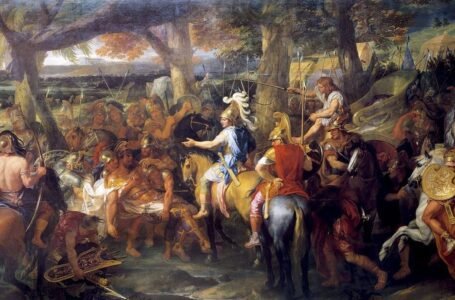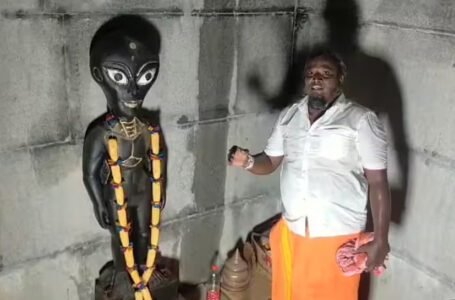Elephanta Caves: Where Mythology and Art Come to Life
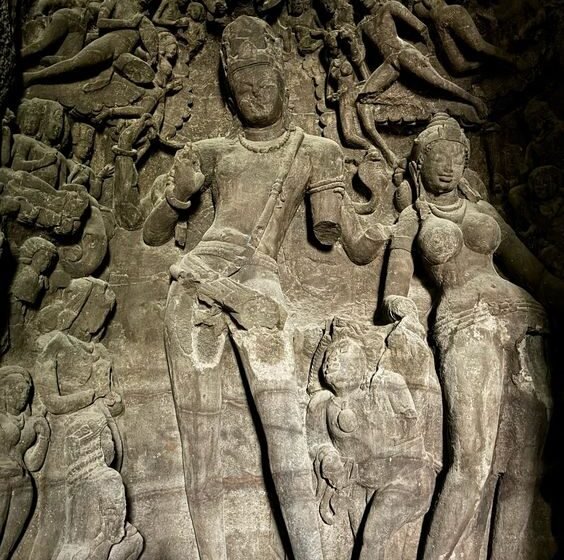
The Elephanta Caves are located on Elephanta Island also known as Gharapur, in Mumbai Harbour. This island has been home to people since as early as the 2nd century BCE making it an important historical site. Originally, the island was a Buddhist site, but over time, it became a major centre for the worship of Lord Shiva, a key figure in Hinduism. The name “Elephanta” was given by the Portuguese when they found a large stone elephant statue on the island during their arrival.
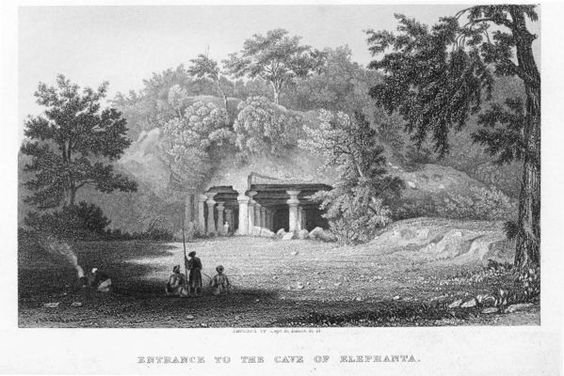
Historical Background and Religious Importance:
The Elephanta Caves, built around the 8th century CE, are famous for their beautiful sculptures and carvings. Most of these are related to Lord Shiva and different stories from Hindu mythology. These caves were not just places of worship but also reflected the artistic skills and religious beliefs of the people who created them.
One of the most famous sculptures in the caves is the Trimurti—a 20-foot-tall statue of Shiva showing his three main roles: the Creator,Preserver, and Destroyer. This impressive sculpture is the centerpiece of the caves and draws thousands of visitors who come to admire the beauty and meaning behind it.The Elephanta caves were built by Rashtrakutas.
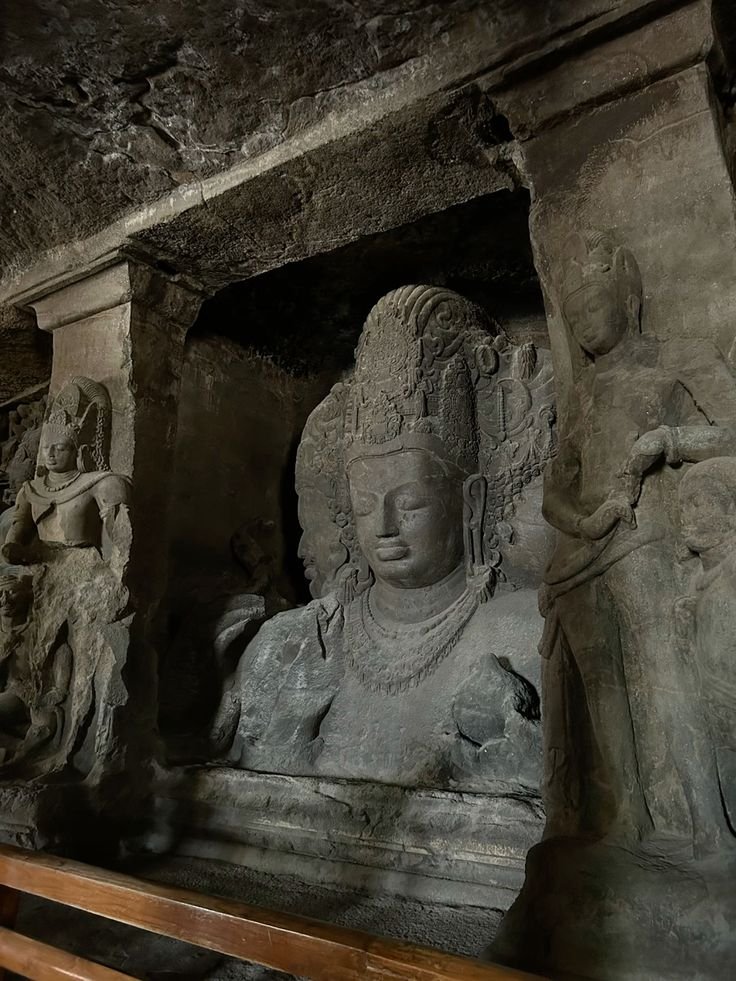
Impact of Portuguese Rule:
Between the 14th and 17th centuries, when the Portuguese occupied the area, the caves suffered considerable damage. Many statues were defaced, and the caves experienced problems like waterlogging, which harmed the delicate structures inside. Despite this, the Elephanta Caves still stand as a powerful symbol of ancient Indian art and religion. They were declared a UNESCO World Heritage Site, preserving their legacy for future generations.
Architecture:
The Elephanta Caves are divided into two main groups:
1.A set of five Hindu caves featuring intricate rock-cut stone sculptures. These caves are closely linked with the Shaivite branch of Hinduism and are predominantly dedicated to Lord Shiva.
2.Two Buddhist caves accompanied by cisterns situated along the shores of the island. In proximity to the hill, there exists a raised mound resembling a Buddhist stupa.
The layout of the main cave, often called the Great Cave, is based on a mandala pattern, symbolizing cosmic balance and harmony. This design not only holds religious meaning but also shows the advanced knowledge of geometry and architecture that the builders had.
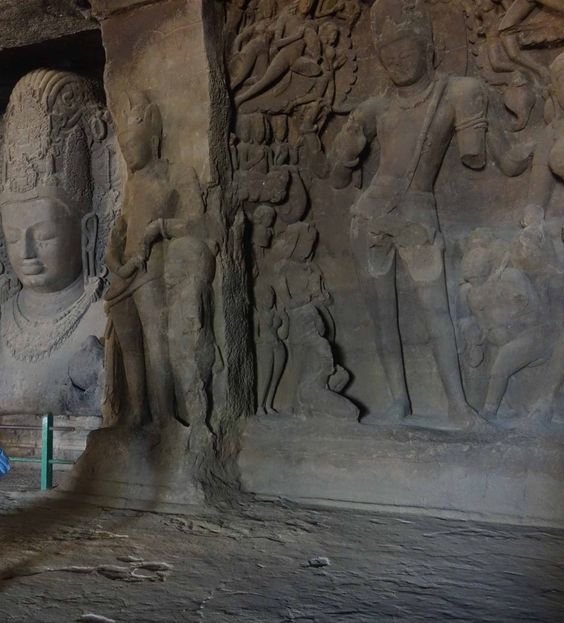
Depictions of Lord Shiva in the Caves
The primary focus of the Elephanta Caves is Lord Shiva. The sculptures in the main cave, Cave 1, offer various representations of Shiva’s life and role in Hindu mythology. Some of the most important depictions include:
– Trimurti: This is the most well-known statue in the caves, showing Shiva with three heads, representing his three forms—Creator,Preserver, and Destroyer. The statue, carved out of solid rock, is a masterpiece of ancient Indian sculpture.
– Nataraja: Another popular image is of Shiva in his Nataraja form, where he is depicted as the Lord of Dance. This form symbolizes the cycle of creation and destruction, with Shiva dancing to destroy the old and make way for the new.
– Marriage of Shiva and Parvati: There are also sculptures showing scenes from the life of Shiva, such as his marriage to Parvati, his divine consort. This scene celebrates the union of the divine forces of creation and preservation.
Other sculptures in the caves depict various other stories from Hindu mythology, adding to the rich religious and cultural heritage of the site.

Portuguese Arrival and Decline:
When the Portuguese arrived in the region, they were fascinated by the large stone elephant that they found on the island. However, over time, their presence led to the decline of the caves. Many of the statues and carvings were defaced, either out of neglect or deliberate actions by the Portuguese soldiers. Additionally, the structures suffered from natural causes like water damage, which made it harder to preserve them.
Despite these challenges, the Elephanta Caves remain an important symbol of India’s artistic and spiritual traditions. In recognition of their historical and cultural significance, the caves were designated as a UNESCO World Heritage Site in 1987. This status has helped protect and restore the caves, ensuring that they continue to be a source of pride and inspiration for future generations.
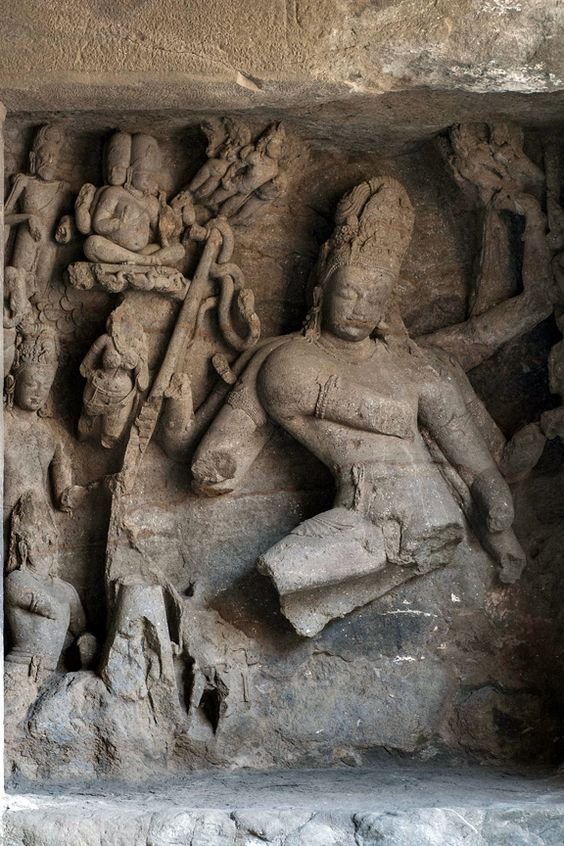
Cultural and Architectural Heritage
The Elephanta Caves are not just important because of their sculptures and religious significance. They also represent a unique blend of cultures and architectural styles. The fact that the island was home to both Buddhist and Hindu sites highlights the religious diversity of ancient India.
The architecture of the caves, especially the intricate carvings, showcases the skill and craftsmanship of the builders. Carving these massive sculptures out of solid rock required both advanced knowledge and artistic talent. The layout of the caves, with their mandala-like design, reflects the builders’ understanding of cosmic balance and harmony, which was a key element of religious architecture at the time.

Preservation Efforts
Over the years, various efforts have been made to preserve and restore the Elephanta Caves. These efforts have focused on protecting the delicate rock-cut sculptures from further damage, particularly from weathering and waterlogging. The designation of the caves as a World Heritage Site has helped bring attention to their significance and has led to increased conservation efforts.
Today, the Elephanta Caves are a popular tourist destination, attracting visitors from all over the world who come to marvel at the artistry and spiritual depth of the site. The caves also serve as a reminder of India’s rich cultural heritage and its long history of religious diversity and artistic achievement.

Conclusion
The Elephanta Caves are a remarkable testament to India’s ancient cultural, religious, and artistic traditions. They began as a Buddhist site, later becoming a major center for Shaivite Hinduism, showing the island’s long history of religious significance. Despite the damage they suffered during the Portuguese occupation, the caves have retained their beauty and importance. The stunning Trimurti sculpture, in particular, stands as a symbol of India’s spiritual depth and artistic excellence.
As a UNESCO World Heritage Site, the Elephanta Caves continue to draw visitors and scholars, offering a window into the religious and cultural life of ancient India. Their preservation ensures that future generations will be able to appreciate the rich history and artistic achievements of this unique site.

